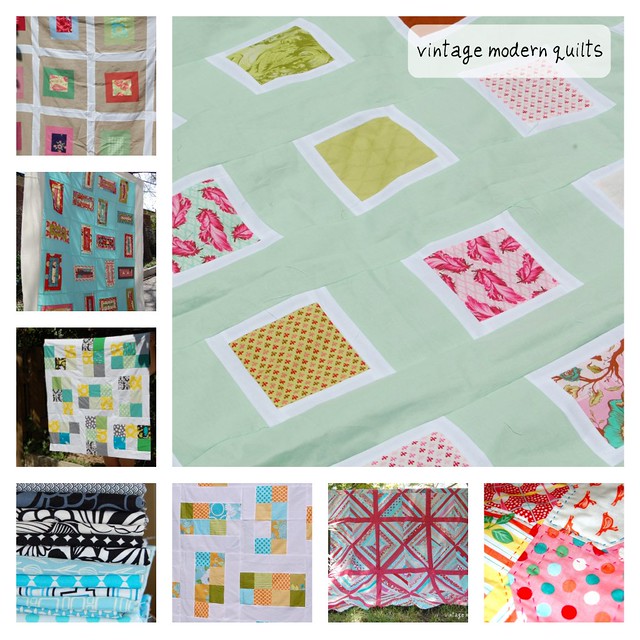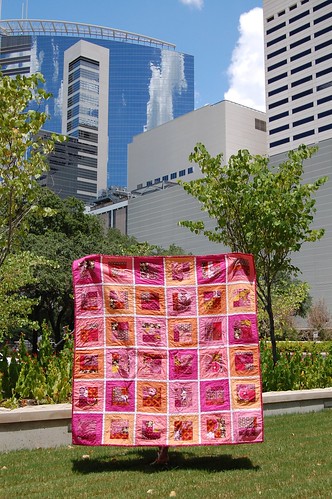Quilt Block: Practical Solutions for Overcoming Quilter’s Block and Inspiring Creativity
Transform your fabric scraps into stunning designs by exploring unconventional arrangements and innovative sewing methods. Start by experimenting with asymmetrical layouts; this approach often leads to eye-catching creations that break the traditional mold. Layering different textures can add depth to your projects, so consider integrating materials like felt or organza for a unique touch.
Utilize standard shapes such as triangles and rectangles to design intricate patterns. By rotating these elements or switching the colors, you can produce striking effects that surprise and delight. Don’t hesitate to introduce contrasting colors or unexpected combinations to make your work stand out, creating a visual impact that captivates observers.
Incorporate modern technology into your crafting process. Using design software allows you to visualize patterns before cutting fabric, saving time and resources. Not only does this method streamline your workflow, but it also boosts your creativity by enabling you to experiment with various combinations virtually.
Participate in local quilting groups or online forums to exchange techniques and gather inspiration. Engaging with fellow enthusiasts expands your skill set and introduces you to unconventional ideas that can reinvigorate your passion for this art form. Sharing your own experiences fosters a community that thrives on collaboration and creativity.
Identifying Common Quilting Block Problems
Check seam allowances carefully; inconsistent measurements lead to misalignment and distortion. Aim for a uniform quarter-inch seam to maintain accuracy across all sections.
If pieces aren’t fitting together, inspect edges for frayed or uneven cuts. Use a rotary cutter and ruler for precise, clean lines to facilitate better joins.
When fabric puckers, ensure proper tension on the sewing machine. Adjust both the top and bobbin tension gradually to eliminate any gathering of the fabric.
Check for pattern distortion during construction. Iron pieces flat after each step, using steam to help relax fibers and achieve desired shapes.
Wavy borders can be caused by pulling the quilt while sewing. Use gentle pressure on the fabric, allowing it to flow naturally through the machine.
If your quilt top appears off-center, double-check the layout against the original design. Re-verify each unit placement before stitching to prevent visual imbalance.
Loose stitches can result from incorrect needle size or type. Match needle specifications to the fabric weight, selecting a universal needle for most projects.
Uneven pressing can lead to bulky seams; press seams open where appropriate to distribute fabric weight evenly, especially on larger pieces.
Be mindful of fabric grain; cutting against the grain can lead to stretching and distortion. Always follow the fabric grain lines when cutting pieces.
Alternative Techniques for Accurate Measurements
Utilize a rotary cutter with a clear acrylic ruler for precise cuts. This combination reduces fabric shifting and enhances measurement accuracy. Highlight the measurement markings on the ruler with a fine-tipped marker for better visibility.
Using Calibration Tools
Incorporate specialty calibration tools, such as a fabric gauge or seam gauge, to regularly verify measurements. These tools ensure consistent accuracy, especially for smaller pieces. Regularly inspect them for wear and tear to maintain their precision.
Employing Grid Templates
Grid templates simplify alignment and measuring during projects. Cut various sizes of templates from cardboard or plastic. This allows for rapid, repeatable measurements, ensuring that each piece matches its intended dimensions.
For accurate angles, use a protractor tool specifically designed for fabric. Securely place it on the material to create precise angles while cutting or marking. Consider marking your cutting lines with tailor’s chalk or disappear ink for easy visibility.
Lastly, keep a consistent methodology for measuring, such as always measuring from the same point on the fabric. This practice helps maintain uniformity across your projects, reducing discrepancies in measurements.
Innovative Fabrics for Unique Quilting Blocks
Consider using Tencel fabric for its soft texture and excellent moisture-wicking properties, which enhance the comfort of finished pieces. Its eco-friendly production process adds to the appeal for sustainable crafting.
Cork fabric offers a unique tactile experience and a natural aesthetic. It is lightweight, water-resistant, and provides easy maintenance, making it suitable for innovative design elements in quilts.
Utilize metallic fabrics to incorporate shimmer and eye-catching visuals. These textiles can transform ordinary designs into striking focal points, especially in quilts meant for special occasions.
Explore suede cloth for a luxurious appearance and durability. Its unique nap allows for creative textural contrasts, enriching the tactile dimensions of projects.
Integrate performance knits for stretchy, versatile applications. These materials provide flexibility, making them ideal for innovative shapes and movements in modern quilt patterns.
Fleece and minky fabrics can add depth and coziness. Their plush qualities not only enhance comfort but also introduce playful elements in projects, perfect for children’s designs.
Experiment with batik fabrics. The unique hand-dyeing process results in stunning color gradations, allowing for intricate, one-of-a-kind patterns that stand out in any composition.
Utilizing outdoor fabrics, like those used for upholstery, can bring durability and vibrant colors to quilts intended for outdoor or high-traffic use, ensuring longevity and style.
Explore thin laminated textiles for water resistance and easy cleaning. They serve well in practical applications, combining functionality with innovative artistic expressions.
Simple Fixes for Misaligned Quilt Blocks
To correct misaligned pieces, use a seam ripper to gently remove the problematic stitches. Ensure you only take apart the sections causing the misalignment, preserving as much of your completed work as possible.
Trimming Adjustments
After reassembling, trim the edges to achieve uniformity. Cut each piece down to the same size before re-sewing. This method helps to ensure all sections fit seamlessly.
Pressing Techniques
Utilize the correct pressing technique; always press seams open rather than to one side to reduce bulk. This technique helps align pieces more accurately. Consider using a tailor’s ham for curved seams to facilitate better shaping.
- Inspect every seam for puckering or distortion before final assembly.
- Use a quilting ruler to verify measurements at each stage.
- For stubborn areas, apply steam to relax the fabric before pressing.
If a piece is still not aligning, consider adding a contrasting strip or border around it. This provides visual interest and can help mask imperfections.
Lastly, take breaks during the construction process to maintain focus and reduce fatigue-related errors. A fresh perspective often reveals misalignments more easily.
Creative Patterns for Scrap Fabric Usage
Try creating patchwork coasters by cutting assorted scraps into squares or circles. Combine different colors and textures for an eye-catching effect. Sew them together and back with a layer of batting for added durability.
Another effective project is a fabric scrap tote bag. Use strips or larger pieces to form a unique design that showcases your fabric collection. Reinforce the seams for strength, making it suitable for grocery or craft items.
Consider making a scrappy quilt using the cobblestone method, where irregular pieces are sewn together in both horizontal and vertical orientations. This technique allows for unlimited variation and incorporates many fabric styles seamlessly.
Create a fabric wreath for door decor using small segments. Cut and twist fabric pieces around a wireframe, allowing them to overlap for a fuller appearance. Adorn with seasonal embellishments for a festive touch.
Experiment with scrap fabric keychains. Cut vibrant shapes, sew them, and add a keyring. It’s a simple, practical way to utilize leftovers while providing personalized gifts.
Lastly, decorative pillows can be made from fabric leftovers. Combine different prints and patterns in a patchwork style, or use reverse applique techniques to add depth. This enhances your home decor while reducing waste.
Incorporating Modern Technology in Block Design
Utilize design software like EQ8 or Adobe Illustrator to create and visualize your patterns. These tools allow for precise measurements and easy adjustments, enabling rapid prototyping of concepts.
3D Printing for Fabric Templates
Consider using a 3D printer to make templates for intricate shapes. By designing a digital model, you can produce physical templates that simplify complex cuts. This method reduces fabric waste and improves accuracy in intricate projects.
Mobile Apps for Project Management
Leverage apps such as Trello or Notion to organize project workflows. Set deadlines, track materials, and manage tasks visually, ensuring efficient project completion without missing critical steps.
| Technology | Benefits |
|---|---|
| Design Software | Precision and customization of patterns. |
| 3D Printing | Accurate templates and reduced material waste. |
| Project Management Apps | Organized workflows and task tracking. |
Q&A: Quilter’s block help
How does using spray starch on fabric before cutting help quilters make accurate blocks?
Applying spray starch to the fabric before cutting helps quilters stabilize the material, reducing distortion and fraying along bias edges. This results in more accurate cutting and cleaner seams, which is essential when sewing pieces right sides together to assemble accurate blocks.
What are the benefits of a step-by-step free tutorial when learning how to make a quilt as a beginner quilter?
A step-by-step free tutorial is especially helpful for a beginner quilter, as it guides them through everything from choosing fat quarters and determining the finished size to assembling rows together. It can simplify techniques like rotary cutting and using a cutting mat, helping build confidence while making quilts.
How can a block of the month pattern help experienced quilters and beginners stay motivated with their next project?
A block of the month program provides one block pattern at a time, allowing both experienced quilters and beginners to focus on achievable tasks. Each next block helps develop skills like assembling square triangles and ensures steady progress toward a finished quilt or baby quilt for the next project.
Why is understanding the finished block size important when following a free quilt block tutorial?
Knowing the finished block and block size is crucial for ensuring all pieces fit together properly in a quilt pattern. Whether using paper piecing, yardage, or fat quarters, a great tutorial will always highlight the right size to help you create a quilt with different sizes of blocks that align precisely in the final layout.
How can visiting a quilt shop benefit someone who is new to quilting?
A quilt shop provides essential supplies, fabric options, and expert advice tailored for those new to quilting. It’s also a great place to discover pre-cut smaller blocks, explore many blocks for inspiration, and receive guidance on the appropriate size quilt for a first project.
Why is mastering the ¼ inch seam important for accurate block construction in quilting?
Mastering the ¼ inch seam is critical for quilters because it ensures that every block came out with precise measurements. Inaccurate seams can lead to mismatched diagonal lines and uneven assembly when working with many blocks, especially in detailed patterns or smaller blocks.
How can attending a quilt show inspire creativity and improve your sewing room setup?
A quilt show allows quilters to view a wide range of styles, from traditional to modern, showcasing how many blocks can be arranged into different size quilt formats. Attendees often gain fresh ideas to enhance their sewing room organization and explore new tools used by experienced makers like the crafty quilter.
What quilting advice might a crafty quilter give about working with diagonal seams and smaller blocks?
A crafty quilter would recommend using precise tools and consistent ¼ inch seams when sewing diagonal lines or assembling smaller blocks. These techniques help maintain alignment, especially when creating a size quilt composed of many blocks that must join cleanly.



